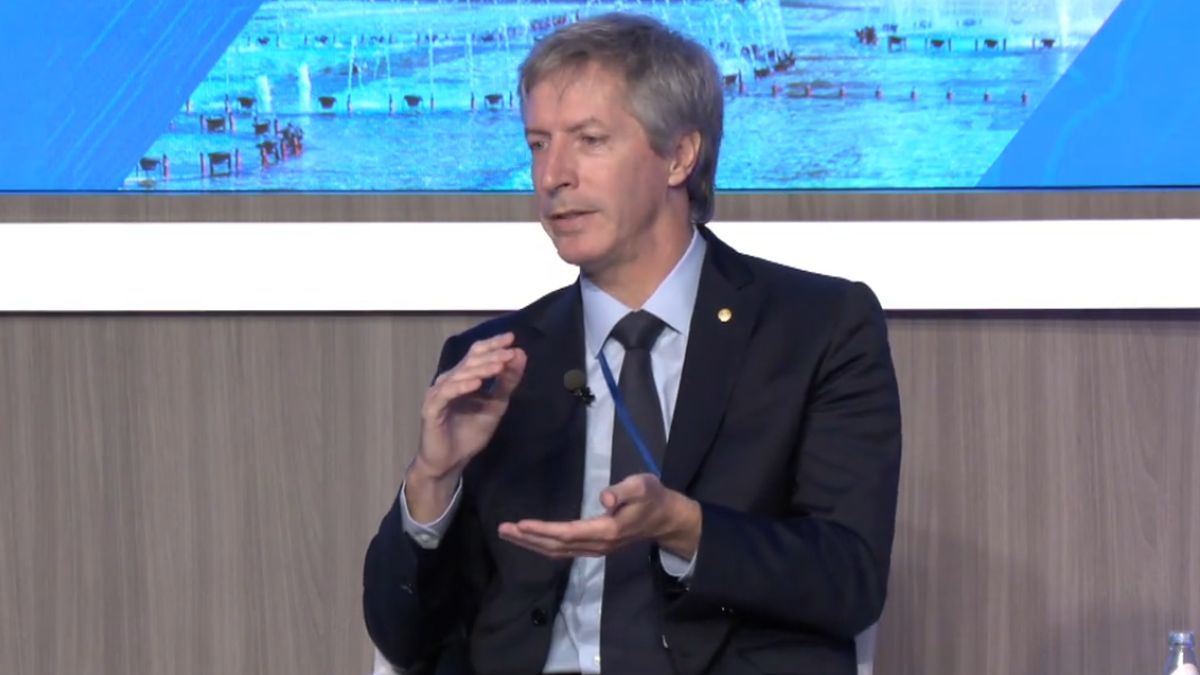The Lefi worked as a tool that allowed the BCRA Automatically absorb excess pesos In the banking system. “All banks, every day, at the end of the day, They had plenty of pesos“Bausili explained.
“In addition to leftover, those pesos were remunerated. Until the end of the Lefi, the banks did not have to do much. At 20, the BCRA made a sweep. What was in the accounts, the BCRA was already taking it 8 in the morning of the next day they were accredited again With the interest of the day, ”he added.
From the elimination of the instrument, That liquidity surplus ceased to be automatically paid. “We went from a system in which all that excess of liquidity that was automatically remunerated, ceased to be paid by the State,” said the head of the central.
Caputo Bausili Dollares.jpg
Caputo and Bausili were the drivers of the measure.
Archive
Repercussions on the behavior of banks
According to Bausili, change forced financial institutions to modify your strategies: “The banks were used to the fact that every day they won an interest rate on all their balances and now they will not win it more automatically. Now you are going to program your need for liquidity.”
In his opinion, this represents a substantial improvement: “When the State remunerates all balances every night, It is a cost for the government. At the extreme, it is up to a subsidy. Instead that the bank is showing its liquidity efficiently, you can be super inefficient, total someone pays you. Now you will have to win a return according to how efficient you are. ”
The three scenarios raised by Santiago Bausili for the transition
Between him June 9 and the July 10the economic team contemplated three possible paths for the transition. He firstconsidered the ideal, assumed that the banks migrate their positions of Lefi to Lecaps During the tender of June 25.
He second contemplated a transition distributed between that date and that of the July 7allowing more gradual management. He thirdmore uncertain, implied that entities postpone their decision until July 10when the Lefi beat and had to solve what to do with their liquidity.
“The third stage touched us”Bausili acknowledged, and said: “Every day we were calculating how many pesos were going to be the ones that represented the balance the day that the Lefi were not more and if the Lefi balance that were transformed into unpaid pesos were going to be surplus or not for the balance of the monetary system.”
The impact on the market
On July 10, around $ 10 billion They were placed in Lefi they went on the market. According to BCRA calculations, there was a demand for $ 5.3 billionwhile the surplus offer reached the $ 4.7 billion. To avoid excess liquidity that destabilizes the system, the Treasure He decided to place debt for that same amount.
“For us, the balance number on Wednesday was $ 4.4 billion. Therefore, the $ 4.7 billion that he raised the treasure he left us very calm, ”Bausili explained.
The president of the BCRA also pointed out that this new stage presents Challenges in the operational plane. “There are inefficiencies in the system. Transfers are made at different times. If you have to pay ARK You have to pay it at 11 in the morning, but if you rescue a common investment fund, they accredit it at 18. Now that We pesos are missingIt is not the same if you are going to give me money at 11 in the morning as at 6 in the afternoon, ”he exemplified.
In response, the Central Bank began working together with the market in the implementation of a Intradiary liquidity wheel. “Now the liquidity has a price,” he summarized.
The new scheme not only aims to reduce the fiscal cost which involved passively remunerate idle balances, but also seeks to strengthen incentives for more efficient management of liquidity in the whole financial system.
“All these movements make the system more efficient and less expensive”Bausili concluded.
Source: Ambito




